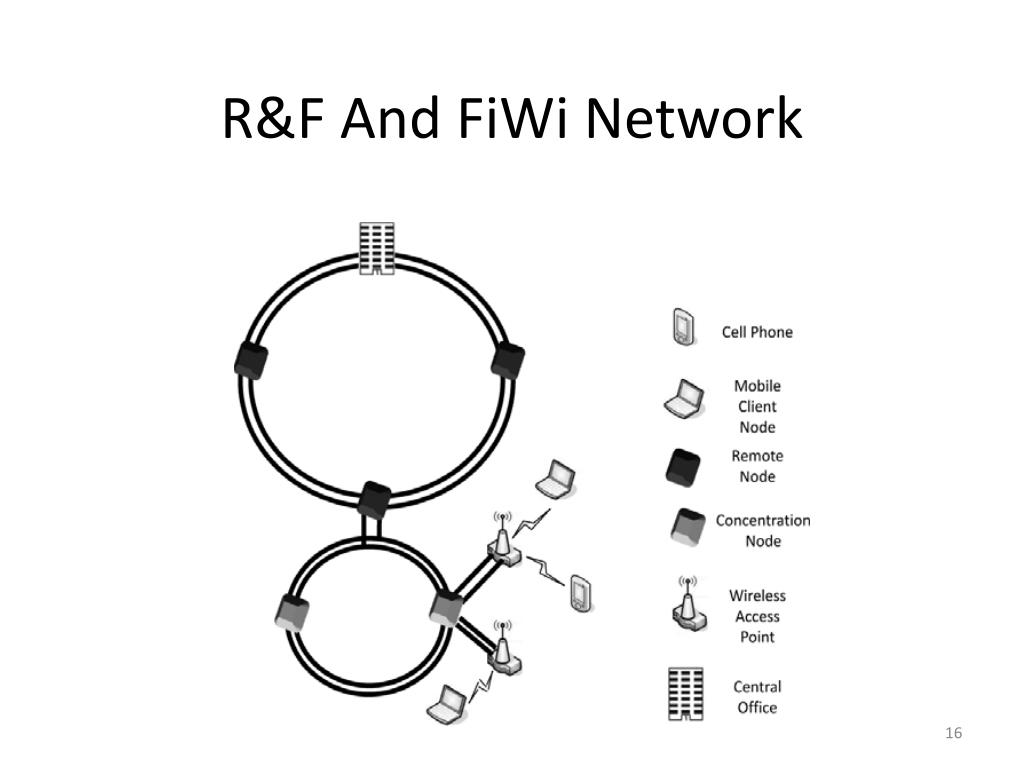

Wireless access can support flexible and ubiquitous communication in small community areas with a low deployment cost However, interference and low bandwidth limit wireless network’s deployment scalability A FiWi access network consists of a wireless sub network as the front end and an optical sub network as the back endĤ Introduction The FiWi must be able to efficiently support upstream, downstream, and peer-to-peer communications The integration of PONs and WMNs in FiWi access networks provides an opportunity to reduce the impact of interference on the network throughput The FiWi can potentially reduce the delay for some p2p communications since the transmission in the PON network can be much faster than that in the multi-hop wireless network.ĥ Agenda Related work and preliminary knowledge All Rights Reserved.1 FiWi Integrated Fiber-Wireless Access NetworksĢ Introduction FiWi access networks introduce wireless-optical-wireless communication FiWi access networks enable traffic to be sent from the source wireless client to an ingress ONU, then to the egress ONU close to the destination wireless client, and finally delivered to the destination wireless client FiWi supports direct inter-ONU communication in the optical sub networkģ Introduction Optical access provides huge bandwidth, but it is costly to achieve deep fiber penetration. © 2022, International Journal of Intelligent Engineering and Systems.
#Simulate fiwi access network full
Simulation results show that the proposed F-DWBA algorithm has a better round-trip delay than the Gigabit-Passive Optical Network (G-PON) standard about 40 percentage and better than the conventional Dynamic Wavelength and Bandwidth Allocation (DWBA) algorithm about 33 percentage at the full working of the tactile internet system. Performance analysis is focused on three periods of the latency time at the optical access network, radio interface and MU interface.

Simulation setup are tested on the latency budget of communication for the TI system starting from the Mobile Unit (MU) through the access point (AP) connected to the Optical Network Unit (ONU) including with the Optical Line Terminal (OLT) to the server. The lowest round-trip delay will make the Fiber-Wireless (FiWi) system can work efficiently and support TI applications. As stated on the improving bandwidth allocation for PONs and Passive Optical LAN (POLAN), we propose the FiWi-Dynamic Wavelength and Bandwidth Allocation (F-DWBA) algorithm to reduce the round-trip delay at lower than one-millisecond, which the proposed F-DWBA algorithm based on the PONs and WLAN 802.11b should have a maximum performance. A one-millisecond round-trip delay is required to support the tactile internet. PONs have been suggested for providing the ultra-low latency for Quality of Service (QoS) applications such as the Tactile Internet (TI) that is the next evolution to enable real- time control of IoT. Then, IoT makes it possible to connect the smart devices with the low latency. Mobile Internet allows us firstly to exchange the content of information and multimedia while on the move. ABSTRACT Explosive growth and usage of internet while COVID-19 pandemic demands an access technology in our lifestyle that means the Internet of Things (IoT) and Passive Optical Networks ( PONs) are increasingly being used in order to support the digital lifestyle.


 0 kommentar(er)
0 kommentar(er)
